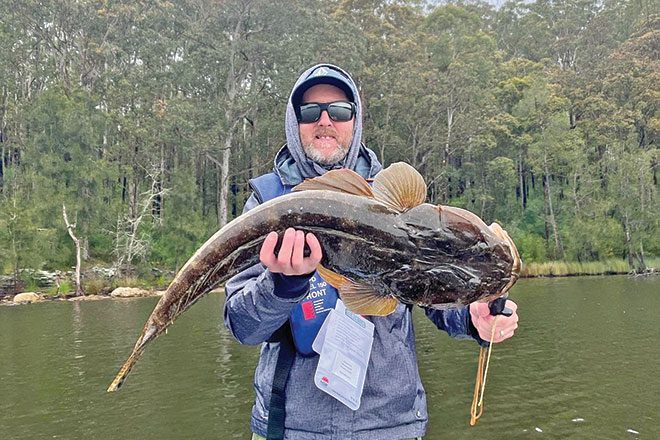Hi everyone, May is normally a pleasant month on the Gold Coast. flathead
The weather is cooler without being too chilly, with a mean annual minimum temperature of 15C and a maximum of 24C.
It is also the third least windy month of the year, behind June and July.
This means some great fishing times ahead in one of the greatest places in the world, Queensland!
Like me, there are some species that appreciate the weather at this time of year and these include dusky flathead, flounder and squid.
I will save my latest squid-fishing tips for articles in coming months when their numbers explode.
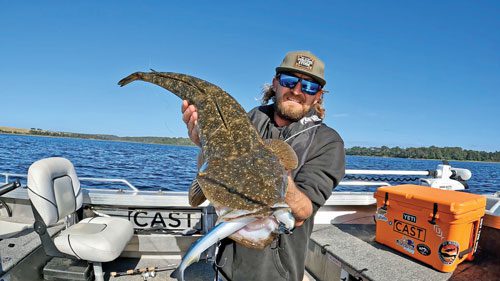
The two bottom-dwelling flat fish we regularly encounter in May – namely flathead and flounder – are easily caught on lures or bait.
Dusky flathead are the most common and have a minimum legal size of 40cm and a maximum legal size of 75cm in Queensland.
We usually release duskies that measure over 60cm.
The possession limit is five per angler but one or two per person is enough for a feed.
Flounder do not have a size limit and, like flathead, are an excellent table fish.
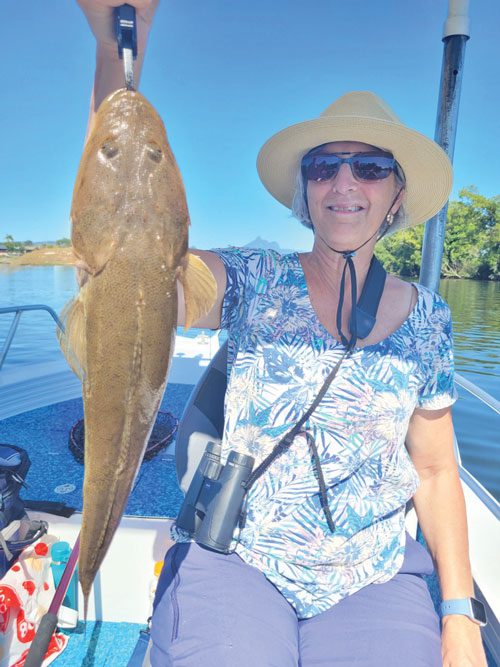
The bigger fish suddenly appear in the Gold Coast Broadwater in cooler months.
As I will for squid, I’ll talk about flounder in June and July – for now the attention is on flathead.
They are a fish that can turn up anywhere, from very shallow water to the deepest holes in estuaries.
Flatties are prevalent in all water depths in estuaries, from 20cm to 20m and more.
In previous years, I spent a lot of time chasing them in deeper water but recently, it has been fun getting back to the shallows.
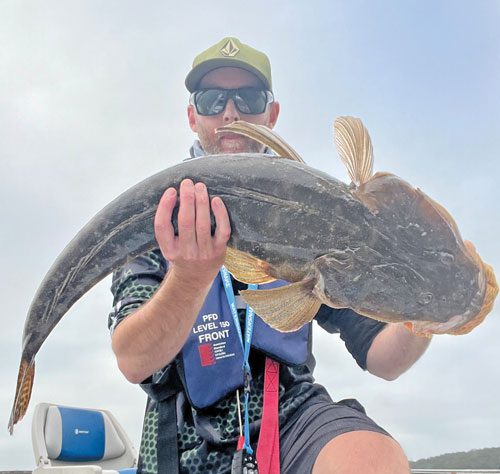
May is not peak season for flathead here but it is a much better month to catch them than in the heat of summer.
They prefer a water temperature of about 20C and at this time of year, a cool morning is a good opportunity to catch them, before the day heats up.
When the water gets colder in winter, they can fire up later in the day.
In the shallows, there are a number of lures that work well but there are none simpler and better than soft plastics.
You will be more likely to tempt big flathead on bigger lures, though don’t expect numbers.
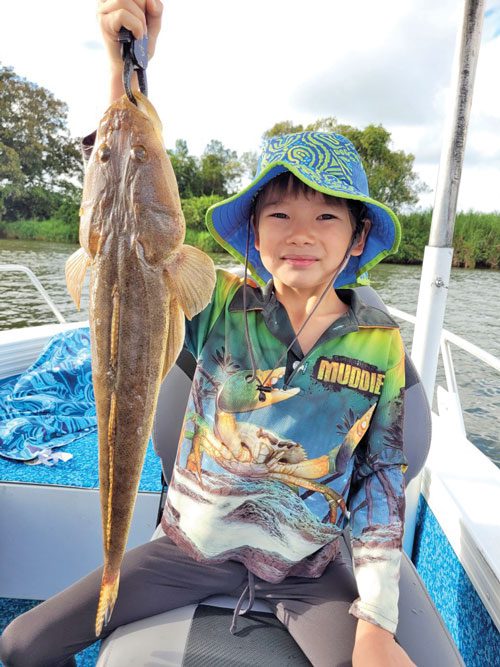
If you want to catch the flathead of a lifetime, make an effort to use only big lures during the day.
While I usually stick to smaller plastics on charters to ensure a good strike rate, I am going to commit to sessions with larger lures this coming season.
An ideal lure for this exact purpose is the Soft Glide from My Lure Box Australia.
Gold Coast local legend John Costello developed this large soft plastic, which comes in three packs with one lure pre-rigged, and you can buy extra hook rigs.
This lure is catching many giant flathead up to and 1m long all around the country and is a must have in every tackle box.
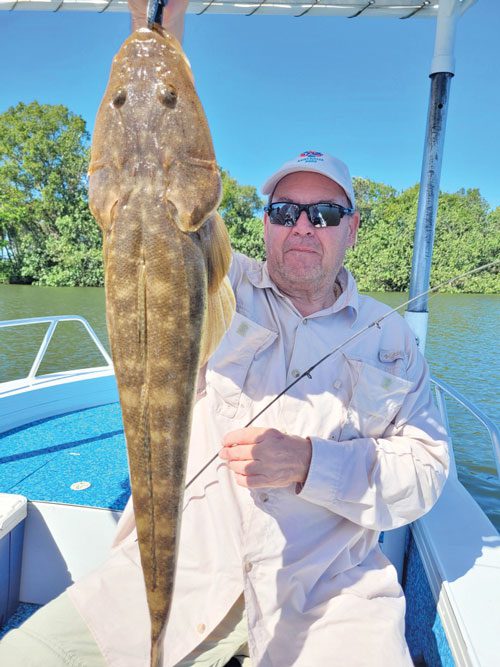
You can view plenty of tips on the My Lure Box Australia YouTube channel.
Here are some things I have learnt from John’s videos and from my experience on the water.
First, you need a 7’ or slightly longer rod, 3-6kg, 2500 or 3000 size reel spooled with 12-15lb braid and 20lb fluorocarbon leader.
Don’t be shy with scent, smear it all over the Soft Glide.
Pro-Cure Scent in Pilchard flavour will do the job nicely.
So often large flathead are caught on whole pillies.
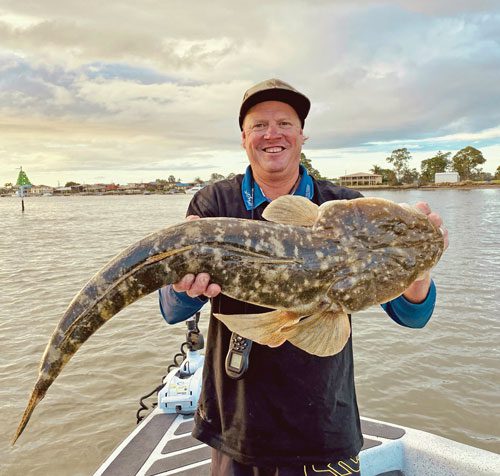
I see many big flatties when I’m wading the flats fishing for whiting.
They are extremely wary creatures and will flurry off at great speed when disturbed.
For this reason, fanning long casts with the wind onto shallow sand flats is the way to go.
These lures sink at a rate of five seconds per metre, making it easy to know when they’re on the bottom.
John spent a lot of time getting this lure to sink slowly and horizontally, and this is one of its best attributes.
Keep it simple after that – a few winds of the reel and pauses will eventually get noticed by a big fish.
Don’t work the lure too fast – they are designed to be retrieved slowly.
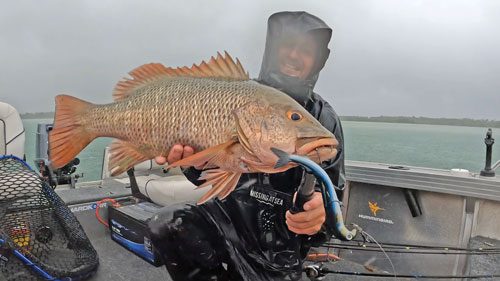
Flathead will often break the surface of the water chasing fish, so keep a look out for splashes – and birds diving on bait give away their location too.
Many anglers struggle with getting weed caught on their hooks.
The answer is simple, don’t cast into weed beds!
Flathead love to bury themselves under sand to ambush prey, so it makes senses that it’s the place to throw lures.
They are often close to the edge of weed beds and in darker sandy hollows and drains.
I have seen them in the centre of sand flats in the middle of the day, however they are never too far from the shelter of weed beds and drop offs to escape to.
Who knows, soon you might encounter the dusky flathead of a lifetime – you can only achieve that by fishing regularly and persistently.
And remember, handle and release them carefully after capture.
For more tips, visit mylurebox.com.au
To book on a charter with myself or Brad, or if you have any fishing related questions, visit goldcoastrivercharters.com, SMS 0432 990 302 or email fishingwithclint@gmail.com, or find us on Facebook – Brad Smith Fishing Charters.
 Bush 'n Beach Fishing Magazine Location reports & tips for fishing, boating, camping, kayaking, 4WDing in Queensland and Northern NSW
Bush 'n Beach Fishing Magazine Location reports & tips for fishing, boating, camping, kayaking, 4WDing in Queensland and Northern NSW
